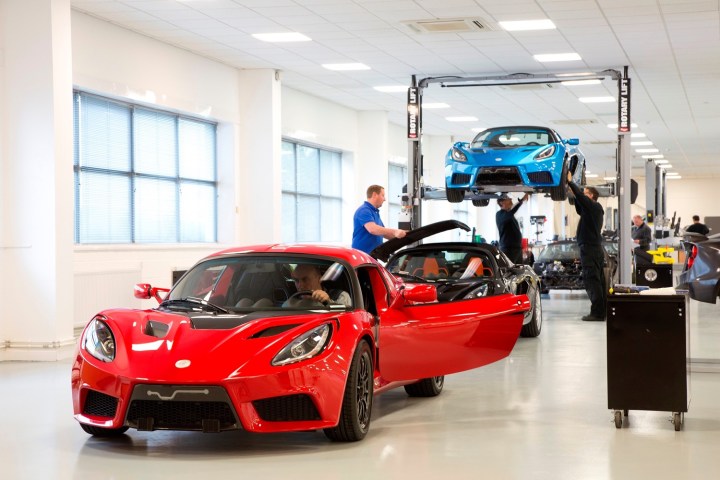
The SP:01 will be built in the U.K., and will only be sold outside of the U.S. for now. The location of Detroit Electric’s factory is at least somewhat fitting because the SP:01 is based on the Lotus Elise. Sound familiar? It should, as Tesla also used the Elise as the basis for its Roadster sports car.
Detroit Electric’s take on the Elise features a 285 horsepower electric motor which can propel the car from 0 to 60 mph in 3.7 seconds, and on to a top speed of 155 mph, the company says. Interestingly for an electric car, there’s also a choice of transmissions. A single-speed automatic is standard, but a twin-speed auto and a six-speed manual are further options. Electric cars generally don’t need multiple forward gears because they produce all of their power no matter at what speed the motor is turning.
While the move to a U.K. production facility (the company is headquartered in The Netherlands) has broken its historical continuity somewhat, Detroit Electric can trace its roots back to 1907. Its electric cars were fairly popular at the turn of the 20th century, before internal combustion asserted its dominance over the industry. The company remained dormant for most of the 20th century, and the rights to the Detroit Electric name were purchased by some former Lotus executives in 2008.
People running the new Detroit Electric did discuss building cars in the Motor City at first, but now it looks like they won’t even be sold on this continent. The company says it has a wide-reaching distribution network, stretching from Iceland and Norway to Azerbaijan, China, Hong Kong, South Korea, and South Africa.
Detroit Electric previously said that the SP:01 will start at around $135,000, and that production will initially be limited to 999 units.
Editors' Recommendations
- Lamborghini teases its first all-electric supercar ahead of Friday’s big reveal
- Mercedes-AMG EQE SUV first drive review: a better electric SUV
- NASA’s experimental electric plane takes ‘major step’ toward first flight
- Jeep is launching its first two electric SUVs in the U.S. in 2024
- 2022 Volkswagen ID. Buzz first drive review: The iconic hippie hauler goes electric


